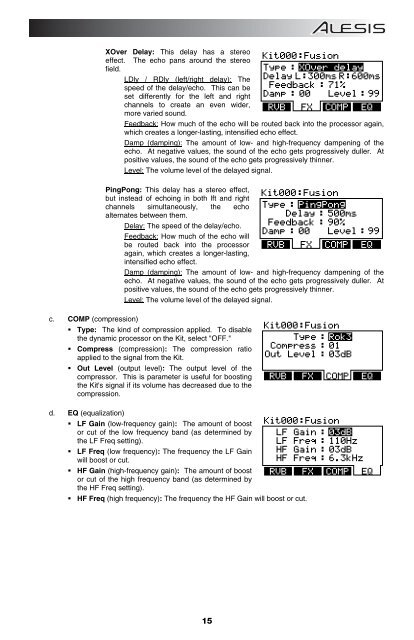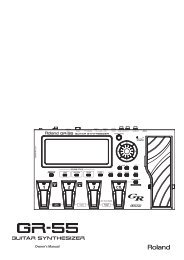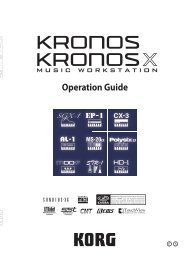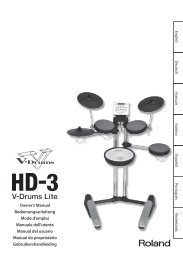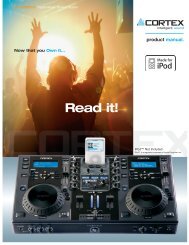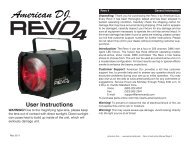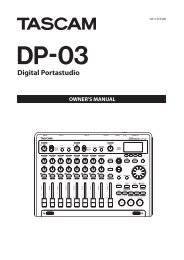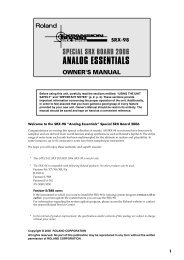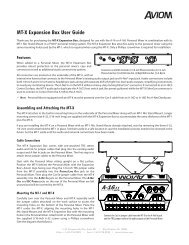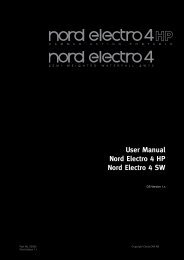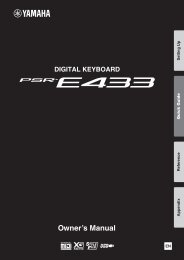Alesis DM10 Manual - American Musical Supply
Alesis DM10 Manual - American Musical Supply
Alesis DM10 Manual - American Musical Supply
Create successful ePaper yourself
Turn your PDF publications into a flip-book with our unique Google optimized e-Paper software.
XOver Delay: This delay has a stereo<br />
effect. The echo pans around the stereo<br />
field.<br />
LDly / RDly (left/right delay): The<br />
speed of the delay/echo. This can be<br />
set differently for the left and right<br />
channels to create an even wider,<br />
more varied sound.<br />
Feedback: How much of the echo will be routed back into the processor again,<br />
which creates a longer-lasting, intensified echo effect.<br />
Damp (damping): The amount of low- and high-frequency dampening of the<br />
echo. At negative values, the sound of the echo gets progressively duller. At<br />
positive values, the sound of the echo gets progressively thinner.<br />
Level: The volume level of the delayed signal.<br />
PingPong: This delay has a stereo effect,<br />
but instead of echoing in both lft and right<br />
channels simultaneously, the echo<br />
alternates between them.<br />
Delay: The speed of the delay/echo.<br />
Feedback: How much of the echo will<br />
be routed back into the processor<br />
again, which creates a longer-lasting,<br />
intensified echo effect.<br />
Damp (damping): The amount of low- and high-frequency dampening of the<br />
echo. At negative values, the sound of the echo gets progressively duller. At<br />
positive values, the sound of the echo gets progressively thinner.<br />
Level: The volume level of the delayed signal.<br />
c. COMP (compression)<br />
• Type: The kind of compression applied. To disable<br />
the dynamic processor on the Kit, select "OFF."<br />
• Compress (compression): The compression ratio<br />
applied to the signal from the Kit.<br />
• Out Level (output level): The output level of the<br />
compressor. This is parameter is useful for boosting<br />
the Kit's signal if its volume has decreased due to the<br />
compression.<br />
d. EQ (equalization)<br />
• LF Gain (low-frequency gain): The amount of boost<br />
or cut of the low frequency band (as determined by<br />
the LF Freq setting).<br />
• LF Freq (low frequency): The frequency the LF Gain<br />
will boost or cut.<br />
• HF Gain (high-frequency gain): The amount of boost<br />
or cut of the high frequency band (as determined by<br />
the HF Freq setting).<br />
• HF Freq (high frequency): The frequency the HF Gain will boost or cut.<br />
15


